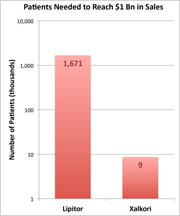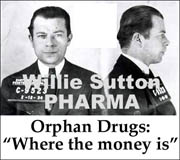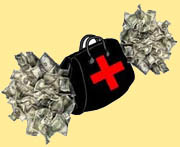Vol. 10, Issue No. 14: 22 SEPTEMBER 2011 – EXECUTIVE SUMMARYBoehringer vs Facebook Social Media Socialism What can be done with dedicated resources and some creativity
 Now that Facebook’s new commenting policy is forcing every pharmaceutical to rethink it’s Facebook strategy — ie, take down all disease-specific pages but keep corporate pages — many drug companies are revising their corporate FB pages.
Now that Facebook’s new commenting policy is forcing every pharmaceutical to rethink it’s Facebook strategy — ie, take down all disease-specific pages but keep corporate pages — many drug companies are revising their corporate FB pages.
Boehringer-Ingelheim (BI) stands out in its attempt to stand out from the social(ist) cookie-cutter crowd of pharma FB pages. Shows what you can do with dedicated resources and creativity.
Compare BI to Pfizer FB pages here: http://bit.ly/oFzZfe
BI continues “pushing the envelope outside the boundaries” in social media. It recently created a YouTube video that spoofs efforts to pronounce the company’s name through “word of mouth” (WOM) marketing. See “BI’s Famously Buxom and Unpronounceable YouTube Video.” New Big Pharma Economies of Scale Less Patients Needed to Reach Blockbuster Sales
 “Meet the new blockbuster,” reports the Wall Street Journal; ie, drugs that treat intractable diseases afflicting “small numbers of patients shown by testing to likely benefit from the drug.”
“Meet the new blockbuster,” reports the Wall Street Journal; ie, drugs that treat intractable diseases afflicting “small numbers of patients shown by testing to likely benefit from the drug.”
One such drug is Pfizer’s Xalkori (crizotinib), a “newly approved for a rare form of lung cancer, for which Pfizer plans to charge $115,200 a year per patient.”
At that rate, Pfizer needs only about 9,000 patients worldwide to generate $1 billion in annual sales of Xalkori.
Does the new drug development “paradigm” require a new marketing paradigm as well?
Find out more here: http://bit.ly/ntyU0B Orphan Drugs Now “Where the Money Is,” Says Willie Sutton’s Ghost  When a dumb reporter asked “Willie” Sutton, the famous bank robber, why he robbed banks, he is reported to have said “Because that’s where the money is.” Duh!
When a dumb reporter asked “Willie” Sutton, the famous bank robber, why he robbed banks, he is reported to have said “Because that’s where the money is.” Duh!
Until a few years ago, if you asked a pharmaceutical company executive why his or her company developed and marketed an “orphan drug” — ie, a drug for a disorder affecting fewer than 200,000 people in the U.S. — you would likely have gotten a response such as “because there is an unmet medical need” or something similar.
Today, however, orphan drugs also have the potential to turn into blockbusters; ie, be where pharma’s money is at.
Read more here: http://bit.ly/oKeCfe Pharma’s Physician Bailout On Average, Pharma Pays Every US Physician Over $750 Per Year
 The pharmaceutical industry has been very generous in making payments to physicians.
The pharmaceutical industry has been very generous in making payments to physicians.
Last year (2010), for example, a mere dozen pharmaceutical companies paid $760 million to physicians and other health care providers for consulting, speaking, research and expenses, according to ProPublica’s “Dollars for Docs” project. ProPublica has taken “translucent” — ie, difficult to analyze — data reported by pharmaceutical companies and created a single database that makes comparisons simple.
The database contains information about payments made to about 500,000 doctors. That’s about half of ALL doctors in the US (including Peurto Rico), which averages about $1,520 per doctor (or about $760 per EVERY doctor in the US).
Find out which companies pay the most to physicians here: http://bit.ly/pnzydc



![6 Digital Tools at the Center of Healthcare Digitalization [INFOGRAPHIC]](http://ec2-54-175-84-28.compute-1.amazonaws.com/pharma-mkting.com/wp-content/uploads/2021/04/6DigitalTools_600px-218x150.jpg)




![6 Digital Tools at the Center of Healthcare Digitalization [INFOGRAPHIC]](http://ec2-54-175-84-28.compute-1.amazonaws.com/pharma-mkting.com/wp-content/uploads/2021/04/6DigitalTools_600px-100x70.jpg)




